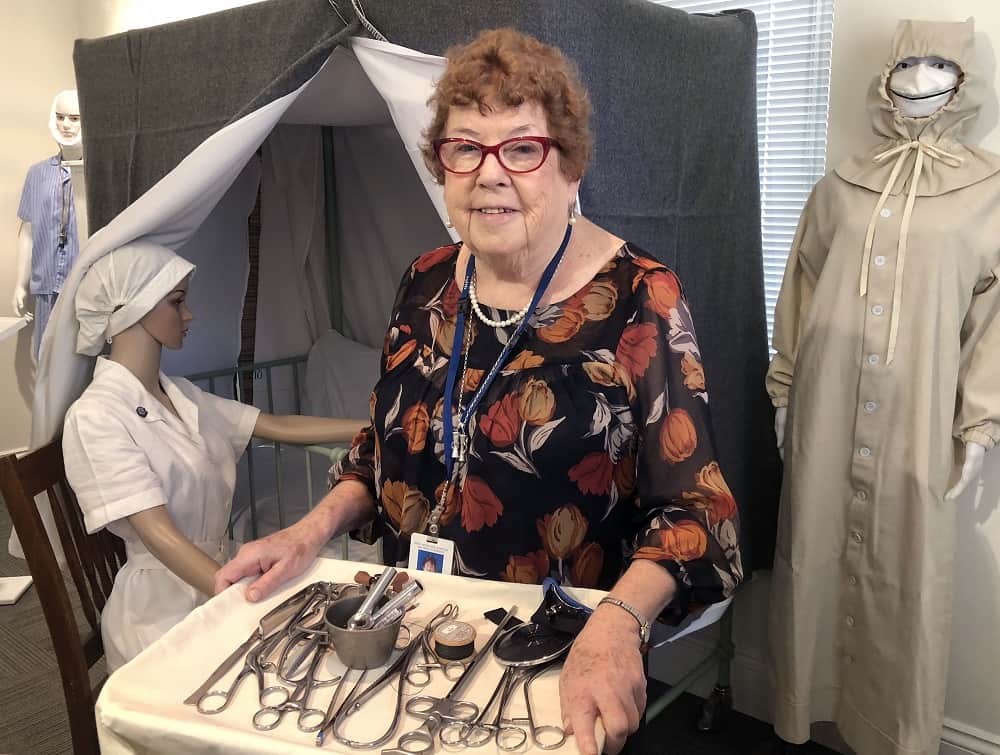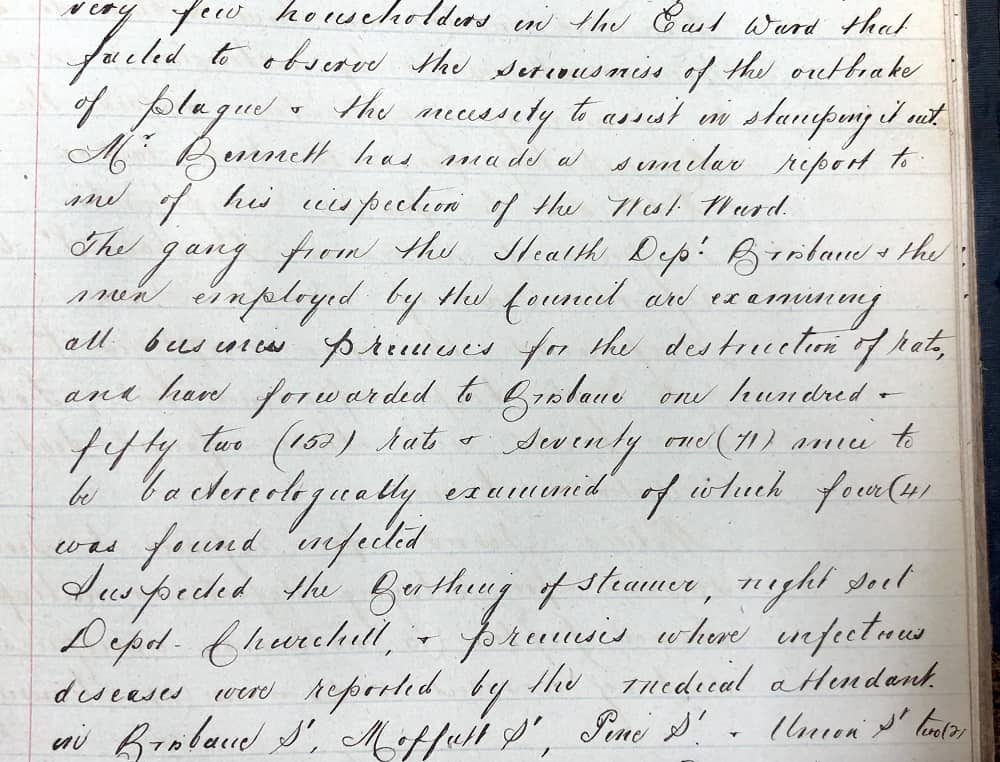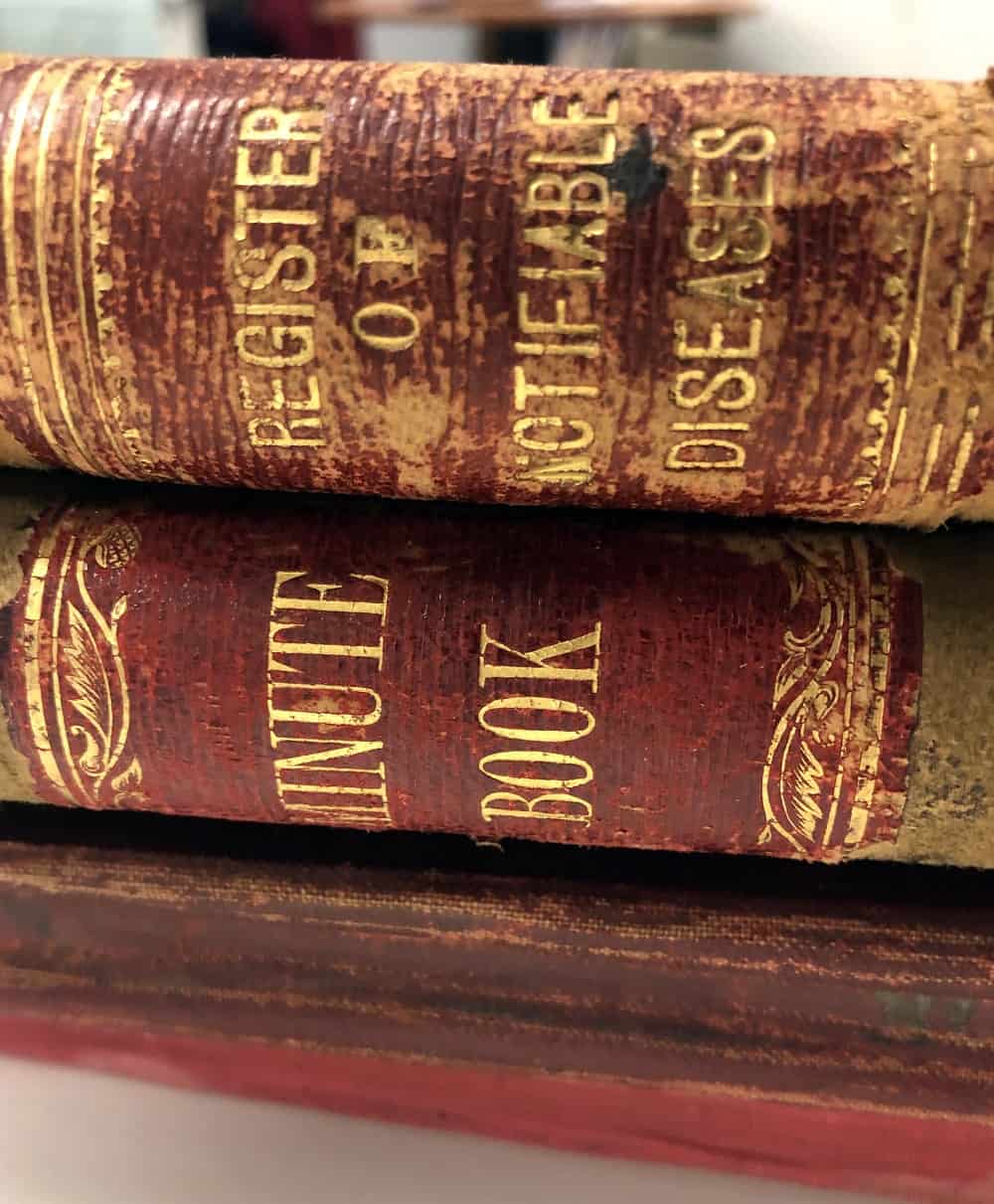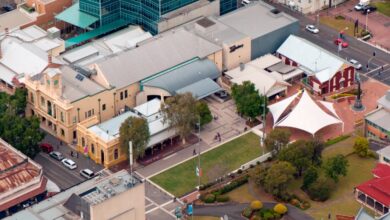
The Ipswich Hospital Museum has a new exhibition: Infections, Epidemics and Fevers of Ipswich: Pestilence, plagues, poultices, poxes, pustules and pyrexias.
Volunteer Elizabeth McNalty (pictured) shares some stories about when the Plague came to Ipswich over 100 years ago.
Millions of people around the world had already died when the Black Death arrived at Ipswich.
The first person to be infected in Ipswich was a two year old toddler, Miss Minnett.
The child of a painter and his wife who lived near the One Mile Bridge.
On a Friday morning, 18 May 1900, the child was taken to the doctors for what the mother thought were the usual effects of teething.
But the mother returned with the child on a Sunday morning when this time the doctor noticed swellings of the groin.
The doctor punctured the groin and took some serum which was send on Sunday night’s train to Brisbane.
By Monday afternoon they had the results. “Specimens show definite plague bacilli.”
There was an arrangement in place at the time between the Ipswich Council and the Joint Board at the hospital that any patients suffering from plague were to be sent to the hospital at Bulimba.
The family was put on lock-down immediately and their house was under police guard to prevent anyone from leaving or entering.
Mr Minnett drove his child and wife to Ipswich station in a spring-cart which was also escorted by police.
The mother and child then took a special train carriage to Brisbane which was disinfected and fumigated afterwards.
Finally they were transported to the plague hospital by ambulance.
Thankfully, Ipswich first plague patient survived.


On 20 May 1905, a report (pictured above) tendered to His Worship the Mayor and Aldermen of the City of Ipswich by the City Inspector:
Up to the present I found very few householders in the East Ward that failed to observe the seriousness of the outbreak of plague and the necessity to assist in stamping it out. Mr Bennett has made a similar report to me of his inspection of the West Ward.
The gang from the Health Dept Brisbane and the men employed by the council are examining all business premises for the destruction of rats and have forwarded to Brisbane one hundred and fifty two (152) rats and seventy one (71) mice to be bacteriologically examined of which four (4) was found infected.
Suspended the berthing of steamer, night soil Depot Churchill and premises where infectious diseases were reported by the medical attendant in Brisbane Street, Moffatt Street, Pine Street, Union Street two (2) cases of Plague; premises in Down Street case of Typhoid Fever, Premises in Lowry Street and Down Street cases of Diphtheria.
In the early 1900s, the Ipswich Council implemented measures to control the rat population and at one point offered residents money for every dozen rats delivered to the corporation yards in Gordon Street.
The council then decided to employ its own rat catchers.
For many years it was thought that rats spread the plague, but we now know it was fleas and human lice that caused the disease being spread so rapidly.
In 1905 another Ipswich family was not so fortunate. Six family members became ill, with five being stable enough to be transported to the Colmslie Plague Hospital in Brisbane. The remaining member, a boy, was too sick to be transferred so a nurse was sent from Brisbane to care for him. He died in Ipswich.
The last case of Plague in Ipswich was reported in 1922. A dozen people contracted the disease and five of them died in Ipswich in total.
Today the disease is easily treatable with antibiotics and there is also a vaccine available.
The Ipswich Hospital Museum, located at the Ipswich Hospital, has a new exhibition.
Infections, Epidemics and Fevers of Ipswich: Pestilence, plagues, poultices, poxes, pustules and pyrexias.
The displays include past and present Personal Protection Equipment (PPE), local stories on various epidemics which swept through Ipswich and some of the equipment and medicines used to treat patients.
The display is open to the public every Wednesday from 9 am until 12 pm.


5